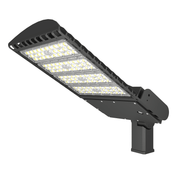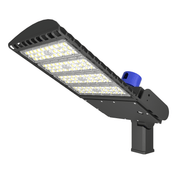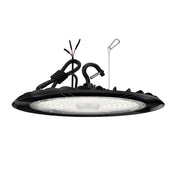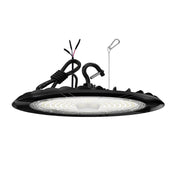I remember the first time I heard about LED street lights—it felt like stepping into the future!
LED street lights replace traditional lights due to energy savings, longer lifespan, eco-friendliness, and faster ROI. Governments are also pushing for this transition through regulations and incentives.
Every time I walk under a newly installed LED street light, I feel a sense of hope for our environment. Not only are these lights brighter and more reliable, but they also bring substantial savings on energy bills—a major win for city budgets. When you think about it, the shift to LEDs is like moving from a gas-guzzler to an electric car. You start with a bit of investment, but soon enough, you’re reaping benefits not just in your pocket but for the planet too. And it’s not just about money or maintenance; it’s about creating a sustainable future we can all be proud of.
What Makes LED Street Lights a Game-Changer?
LED street lights aren't just about brightening up the night; they're changing the game with their energy smarts and eco-friendly vibes. Let's dive into why they're winning hearts and minds in cities everywhere.
LED street lights are revolutionizing urban areas with benefits like energy efficiency, long life spans, environmental friendliness, and cost savings. These lights use less power, last longer, and contribute to sustainable urban living.

Energy Efficiency and Cost Savings
I remember the first time I saw a street full of LED lights—it was like someone had turned on a switch to a more sustainable future. These LED street lights are a marvel in terms of energy efficiency. They cut energy usage by 50-70% compared to old-school street lights. Imagine what that does for a city's budget! It’s like putting money back into the community's pocket.
| Lighting Type | Energy Consumption | Cost Savings Potential |
|---|---|---|
| Traditional | High | Low |
| LED | Low | High |
Longevity and Durability
Here's a fun fact: LED street lights can go on and on for over 50,000 hours. That's like having a trusty friend who's always there for you. This longevity means less hassle and fewer replacements, which is a huge relief when you think about maintenance.
Environmental Compliance
For those of us who care about Mother Earth, LED street lights are a no-brainer. They're free from harmful stuff like mercury and totally recyclable. It's like getting an eco-friendly stamp of approval for your city.
-
Eco-friendly Materials:
- Mercury-free
- Fully recyclable
Government Incentives and Faster ROI
I’ve seen governments offer some sweet deals to encourage the switch to LEDs—think incentives that make the financial side look even brighter. With reduced costs and these incentives, cities often see a return on investment (ROI) within three to five years. Now that's smart spending!
Explore government programs that support LED implementations.
Enhanced Public Safety
Safety is where LED street lights shine. I’ve noticed how they light up streets evenly and brightly, making it easier for everyone to see and be seen. That kind of visibility helps lower accident rates and keeps neighborhoods safe from crime. It's peace of mind that’s built into the infrastructure.
For more insights on public safety benefits, visit this resource.
So, whether you're looking to save money, go green, or boost safety, LED street lights are lighting the way forward.
LED street lights consume 50-70% less energy.True
LEDs are highly efficient, using significantly less energy than traditional lights.
LED street lights have a lifespan of over 100,000 hours.False
LED street lights typically last over 50,000 hours, not 100,000.
How Do LED Lights Enhance Urban Safety?
Imagine walking down a well-lit street, feeling safe and secure as LED lights illuminate your path. Let's explore how these brilliant innovations are reshaping urban safety.
LED lights enhance urban safety by offering brighter, more dependable illumination, deterring crime, and improving visibility. Their energy efficiency and longevity make them perfect for consistent public lighting solutions.

Enhancing Visibility
I remember the first time I walked home late at night after our city upgraded to LED streetlights. The difference was astounding. Everything was so much clearer, even in areas that used to be dim and shadowy. These lights offer brightness levels that traditional lighting just can't match. They transform streets, parks, and alleys into safer spaces by making potential threats visible and ensuring security cameras capture crisp images for better crime prevention and investigation.
Moreover, LED lighting systems provide uniform light distribution, reducing dark spots that could harbor criminal activities. This consistent illumination ensures that security cameras capture clearer images, aiding in crime prevention and investigation.
Crime Deterrence
There’s something about a well-lit area that makes you feel at ease, right? Bright lights naturally make spaces less appealing to those with ill intentions. I've seen it in my neighborhood—when new LED lights were installed in once problematic areas, incidents of crime noticeably dropped. It's not just about lighting up space; it's about strategically placing these lights in high-risk zones as part of a broader crime prevention strategy.
Studies have shown that improved street lighting can significantly reduce crime rates. Authorities often install LED lights in high-risk zones as part of broader crime prevention strategies. The longevity of LEDs ensures these areas remain consistently well-lit without frequent maintenance interruptions.
Economic and Environmental Benefits
Besides safety, LEDs bring along some pretty impressive economic and environmental perks. When our city switched to LEDs, the immediate drop in energy bills was hard to ignore—plus, they last significantly longer than traditional bulbs.
Here's a quick comparison:
| Feature | LED Lights | Traditional Lights |
|---|---|---|
| Energy Efficiency | High | Moderate |
| Lifespan | 50,000+ hrs | 10,000-20,000 hrs |
| Maintenance Cost | Low | High |
| Environmental Impact | Low | High |
The economic benefits of using LEDs include reduced energy consumption and lower operational costs for cities. Their eco-friendly nature aligns with sustainable urban development goals, making them a preferred choice for city planners like me who are always seeking eco-friendly solutions.
Community Well-being
LED lights do more than just brighten up our surroundings—they foster a sense of community well-being. When public spaces are well-lit, people feel safer and are more likely to engage in community activities after dark. I've seen residents gather in well-lit parks for evening strolls or social gatherings.
Cities adopting this technology report higher levels of community satisfaction, as residents feel more secure and connected in their neighborhoods. It's amazing how something as simple as effective lighting can uplift a community's spirit.
How Do LED Street Lights Affect the Environment?
Imagine walking down a street at night and realizing those bright LED streetlights overhead are doing more than just lighting your path—they’re shaping our environment.
LED street lights slash energy use and cut greenhouse gases, making them eco-friendly. But they can also add to light pollution, impacting wildlife and sleep cycles. We need a smart balance for greener cities.

Energy Efficiency and Carbon Emissions
Ever since I switched to LED lighting in my own home, I've been amazed at the energy savings. LED street lights bring the same magic to our streets—they use up to 70% less energy than their incandescent or fluorescent counterparts. This means fewer carbon emissions, which is a big win for the planet. Plus, the reduced energy consumption results in cost savings and less dependency on fossil fuels, something I can appreciate every time I see my utility bill.
| Type of Light | Energy Usage (kWh) | CO2 Emission (kg/year) |
|---|---|---|
| LED | 100 | 45 |
| Incandescent | 300 | 135 |
Light Pollution Concerns
I remember the first time I looked up at the night sky from a city park and realized how different it was from the starlit skies of my childhood camping trips. While LEDs are great for efficiency, they can contribute to light pollution changing nocturnal environments by affecting both wildlife and human sleep patterns. Finding ways to minimize this impact is essential for our well-being and for preserving natural ecosystems.
Impact on Wildlife
It’s fascinating—and a bit concerning—how something as simple as street lighting can affect wildlife. Blue-rich white LEDs might confuse migratory birds or alter how nocturnal insects search for food. As we move forward, opting for LEDs with suitable spectral properties could be a game-changer.
Recyclability and Toxicity
Switching to LEDs was one of the best decisions I made for an eco-friendly lifestyle. Unlike older lighting systems that contain harmful materials like mercury, LEDs are completely recyclable and non-toxic. This makes them a stellar choice for supporting a circular economy where we can recover and reuse materials instead of just tossing them away.
Economic Incentives and Challenges
Governments often offer incentives for adopting LED street lighting, which can help speed up the transition to sustainable urban infrastructure. However, there are initial costs and some tech hurdles that can make this transition a bit challenging. Navigating these complexities is crucial for shaping policies and strategic plans in urban development.
How Are Government Incentives Supporting the Transition?
Have you ever wondered how governments are nudging us towards a greener future?
Governments worldwide are spurring the shift to sustainability by offering tax breaks, grants, and subsidies for renewable energy technologies. These incentives make green projects financially appealing to both businesses and individuals, helping to pave the way for a more sustainable future.

Financial Support through Tax Credits and Grants
As I dive into the world of sustainable practices, I can't help but marvel at how governments are stepping up to the plate. It's like they're saying, "We've got your back!" with these generous financial incentives. Picture this: tax credits, like the U.S. Investment Tax Credit (ITC), that make it less daunting to install solar panels. I once chatted with a friend who transformed his home into an eco-friendly haven, thanks in part to these very credits. And it's not just about tax breaks—grants are also on the table for those willing to innovate for a sustainable future.
| Country | Incentive Type | Details |
|---|---|---|
| USA | ITC | 26% tax credit for solar systems on residential and commercial properties. |
| Canada | Clean Energy Fund | Supports large-scale renewable energy demonstration projects. |
Encouraging Innovation with Subsidies
Subsidies are like little nudges that encourage companies to innovate. I remember hearing about a startup that developed energy-efficient appliances with government subsidies as their safety net. Such support is crucial because it lowers costs and emboldens businesses to invest in research and development of groundbreaking technologies. Imagine a world where energy-efficient appliances are not just the norm but expected—subsidies help us get there.
Creating Regulatory Frameworks
And let's not forget the regulatory frameworks that are quietly revolutionizing industries. Governments are crafting rules that encourage or even require the use of sustainable technologies. For example, regulations might mandate LED lighting in new buildings, which is a huge step toward reducing our carbon footprint. I've seen firsthand how these policies can shift market dynamics and make sustainability not just a choice but a necessity.
Promoting Public Awareness
Public awareness campaigns are another powerful tool in this transition. They're like a friendly neighbor reminding you of the long-term benefits of choosing renewable energy sources. The UK’s "Smart Energy" initiative is a great example—it encourages homeowners to install smart meters, emphasizing energy efficiency and cost savings. I’ve met folks who proudly show off their smart meters, inspired by such campaigns.
Government support is like a guiding light, illuminating the path towards overcoming initial costs and technological barriers associated with green transitions. By understanding these incentives, we can align our strategies to maximize benefits from sustainable investments.
Conclusion
LED street lights are replacing traditional lighting due to their energy efficiency, longevity, eco-friendliness, and cost savings, enhancing urban safety and sustainability in cities worldwide.








